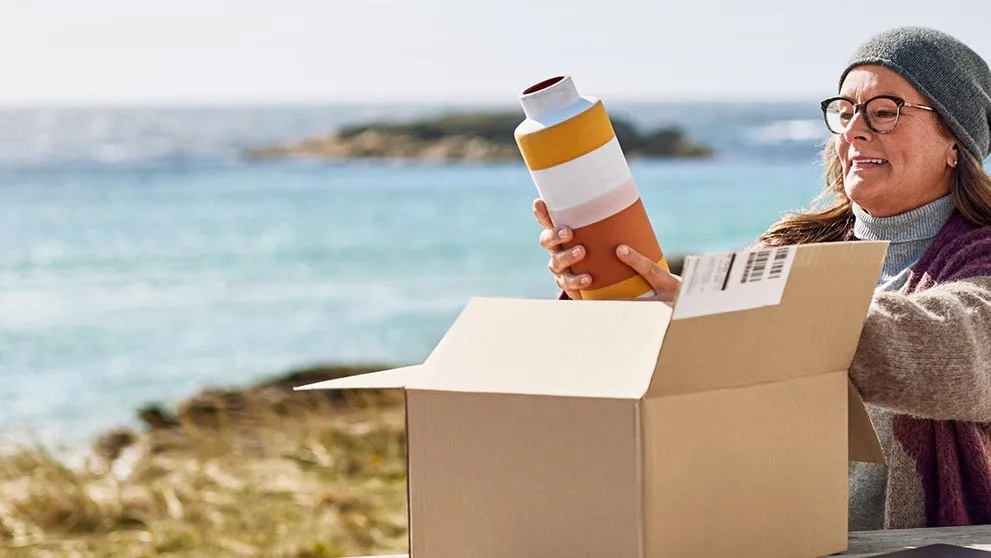
The Philippines, a tropical archipelago of over 7,000 islands, faces challenges in preserving the quality and safety of temperature-sensitive goods during transportation. The increasing demand for pharmaceuticals, fresh produce, and other perishable items necessitates robust and reliable temperature-controlled logistics solutions.
In this comprehensive guide, we will look into the critical role of temperature-controlled logistics in the Philippines and highlight how DHL Express provides tailored solutions to meet these specialized needs.
What is temperature-controlled logistics?
Temperature-controlled logistics, what is also known as cold chain logistics, encompasses the continuous process of maintaining a specific temperature range throughout the storage, transportation, and distribution of temperature-sensitive cargo. This meticulous approach ensures that the product's quality, safety, and efficacy are not compromised. Examples of temperature-sensitive goods vital to the Philippine market include vaccines, biologics, prescription medicines, select food products, and other perishables.
However, a lapse in temperature control can lead to spoilage, loss of efficacy, and, in the case of pharmaceuticals, even pose serious health risks. For many temperature-sensitive goods, especially pharmaceuticals, couriers often maintain a temperature range between 2°C and 8°C to ensure quality. As for manufacturers, they play a critical role in establishing and communicating these precise temperature requirements to all parties involved in the supply chain.
Temperature-sensitive goods in the Philippines
Several industries in the Philippines rely heavily on temperature-controlled logistics. The pharmaceutical sector, in particular, depends on maintaining the cold chain for vaccines, biologics, and various medications. Even a slight temperature fluctuation can render these products ineffective or even harmful. For example, certain vaccines require storage at extremely low temperatures, often below freezing, to maintain their potency. Similarly, many biologics are highly sensitive to temperature variations and must be handled with extreme care.
The Philippines' geographically dispersed islands make cold chain shipping even more critical for inter-island transport of temperature-sensitive products. Imagine shipping a batch of life-saving vaccines from a manufacturing facility in Luzon to a remote clinic in Mindanao. Without proper temperature control, the vaccines could lose their potency during the journey, rendering them ineffective and putting lives at risk.
Other industries, in addition to pharmaceuticals, benefit from temperature-controlled logistics. The food industry relies heavily on refrigerated transport to ensure that fresh produce, meat, seafood, and dairy products reach consumers in optimal condition. The floriculture industry maintains the freshness of cut flowers during transit, while the chemical industry deals with certain compounds sensitive to temperature fluctuations.
Regulations and standards
Compliance with both local and international regulations is essential in temperature-controlled shipping. In the Philippines, several agencies enforce these rules:
- Food and Drug Administration (FDA): Ensures that health products—whether food, drugs, or medical devices—comply with rigorous safety and quality standards before they can be marketed and sold in the Philippines. It also monitors the issuance of licenses and permits to manufacturers, importers, and distributors.
- Bureau of Customs: Oversees imports and exports, ensuring temperature-sensitive goods meet required standards. They collaborate with other agencies and may require specific documentation for these shipments.
- Department of Health (DOH): Plays a role in public health initiatives, particularly concerning vaccines and essential medicines. They work with the FDA to ensure safe handling and distribution.
Beyond national agencies, international standards also apply:
- World Health Organization (WHO): Provides international guidelines1 for shipping temperature-sensitive pharmaceuticals, especially vaccines, covering cold chain management and risk assessment.
- International Air Transport Association (IATA): Sets standards for air transport, including regulations for packaging, labeling, and handling temperature-sensitive cargo.
- Parenteral Drug Association (PDA): Develops technical resources and guidelines2 for the pharmaceutical industry, including temperature-controlled logistics best practices.
- European Union (EU): The EU has stringent regulations for temperature-sensitive goods, especially pharmaceuticals, covering manufacturing, storage, and distribution within its member states and impacting international trade with the EU.
- Pharmacopeia: Various pharmacopeias, such as the U.S. Pharmacopeia (USP), set standards for drug quality, purity, strength, and identity, which often include specific temperature requirements for storage and transport.
Types of temperature-controlled transportation
Several methods are employed for temperature-controlled transportation, each suited to different needs, distances, and product requirements:
1. Refrigerated vehicles
For domestic transport in the Philippines, vans and trucks equipped with temperature-controlled compartments are commonly used. These vehicles maintain a consistent temperature, ensuring goods remain within the required range. Various sizes are available, from small vans for local deliveries to large trucks for long-haul transport, offering flexibility for different shipment volumes and distances.
2. Passive shipping containers
Insulated boxes with coolants or phase-change materials maintain the required temperature for a limited time. These are suitable for short-distance transport or as added protection within refrigerated vehicles, providing an extra layer of temperature stability. Passive containers are often used for shipping smaller quantities of temperature-sensitive goods, such as individual vaccine doses, where maintaining a specific temperature for a shorter period is a must.
3. Active shipping containers
These larger containers have built-in refrigeration units powered by batteries or an external power source, often used for air and sea freight, especially for imports and exports. They offer precise temperature control and are ideal for shipping large volumes of temperature-sensitive products over long distances, ensuring their integrity during transit.
4. Temperature-controlled air freight
Given the Philippines' archipelago, temperature-controlled air freight is often the fastest and most efficient option, especially for time-sensitive goods. Dedicated cargo airlines and commercial airlines with specialized handling procedures ensure the safe shipping of temperature-sensitive products for inter-island transport within the country.
DHL Express solutions for temperature-controlled shipping in the Philippines

DHL Express recognizes the critical importance of temperature-controlled logistics for businesses in the Philippines. With our global network and expertise in cold chain, we offer a range of tailored solutions and temperature-sensitive shipping advice to help you with your logistics needs. Our Medical Express (WMX) service is specifically designed for the pharmaceutical and life sciences industries, providing specialized handling, packaging, and tracking for temperature-sensitive shipments, ensuring compliance with all relevant regulations.
Ready to experience the difference of DHL Express's temperature-controlled logistics solutions? Create a business account today to access our WMX medical courier service and benefit from our expertise in handling temperature-sensitive products.
























